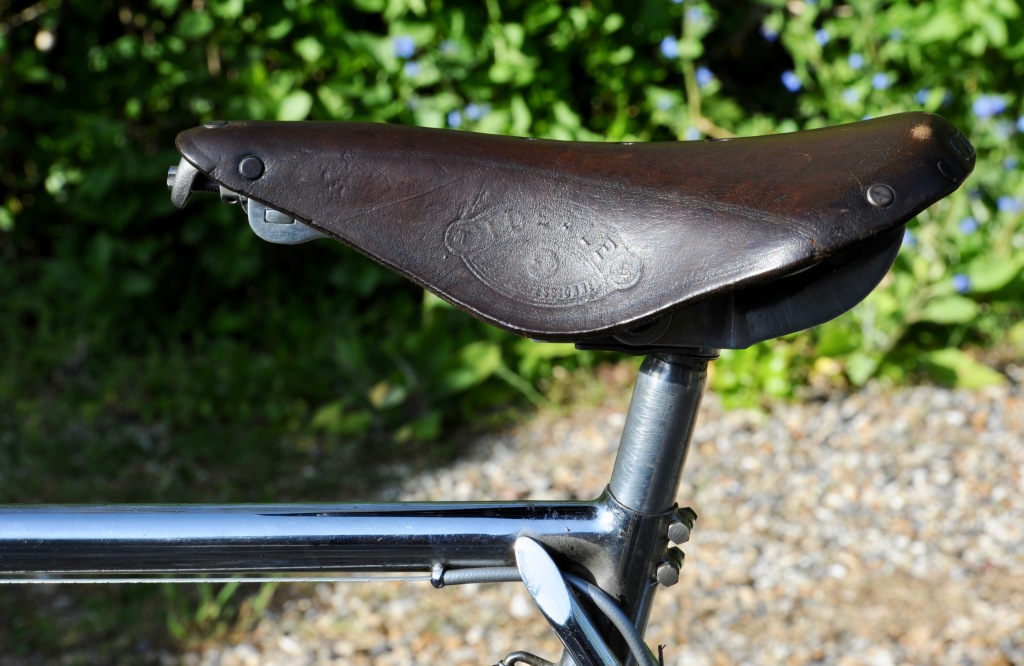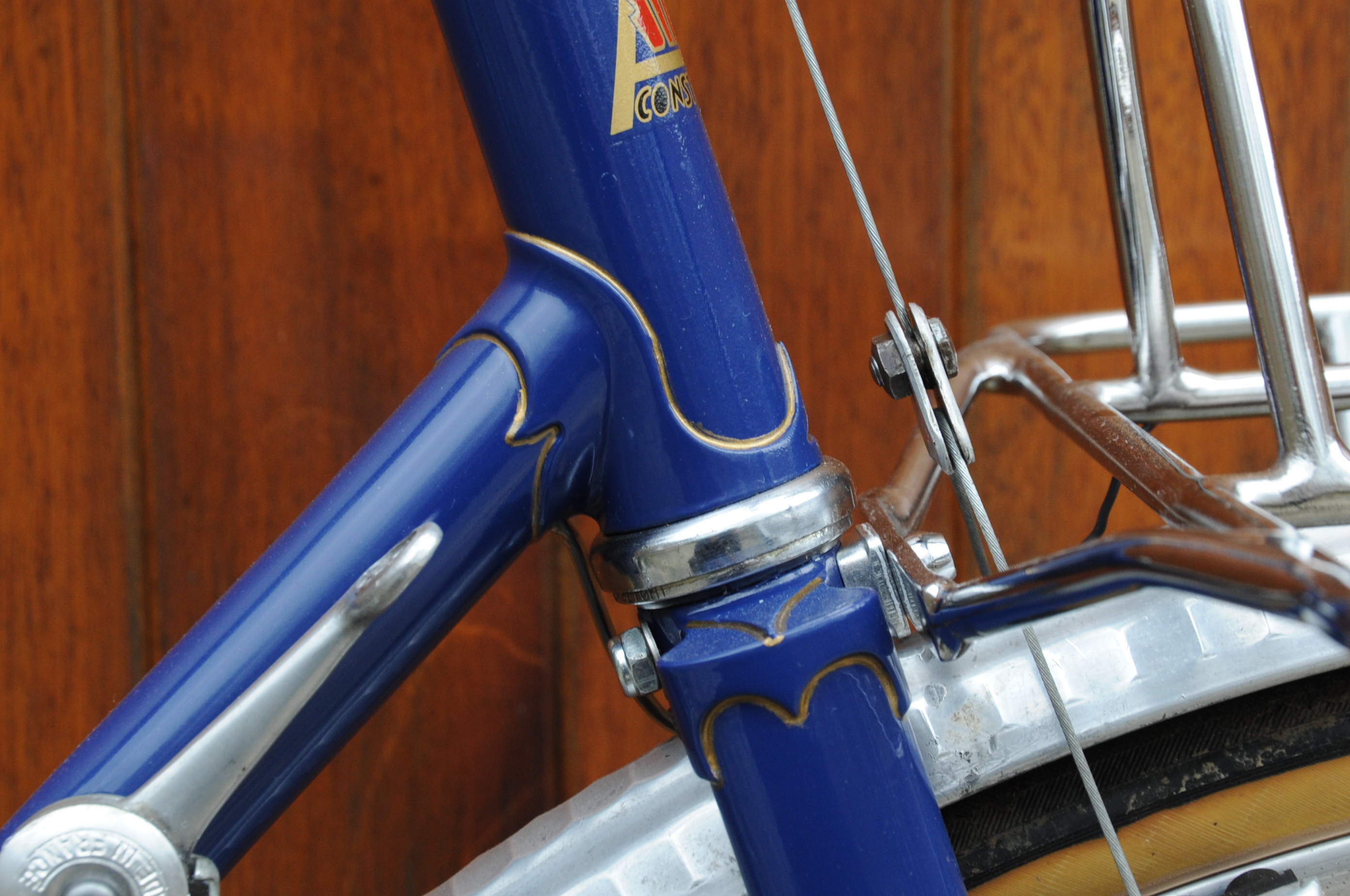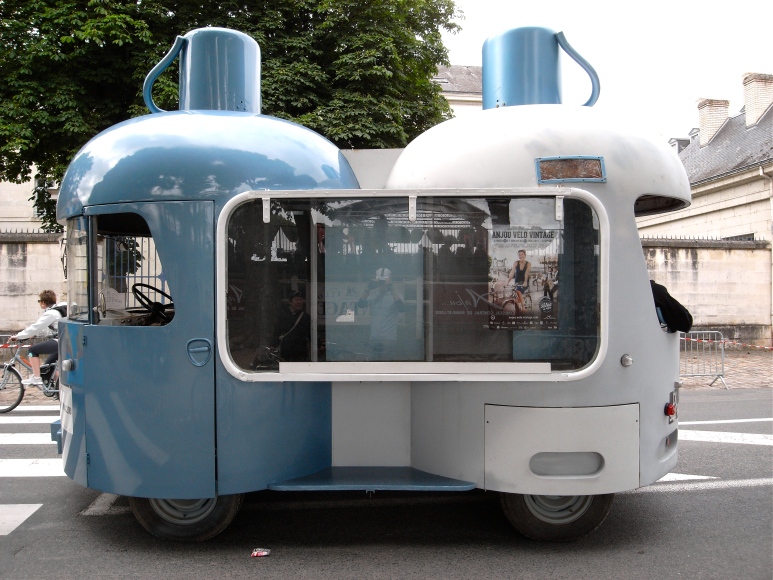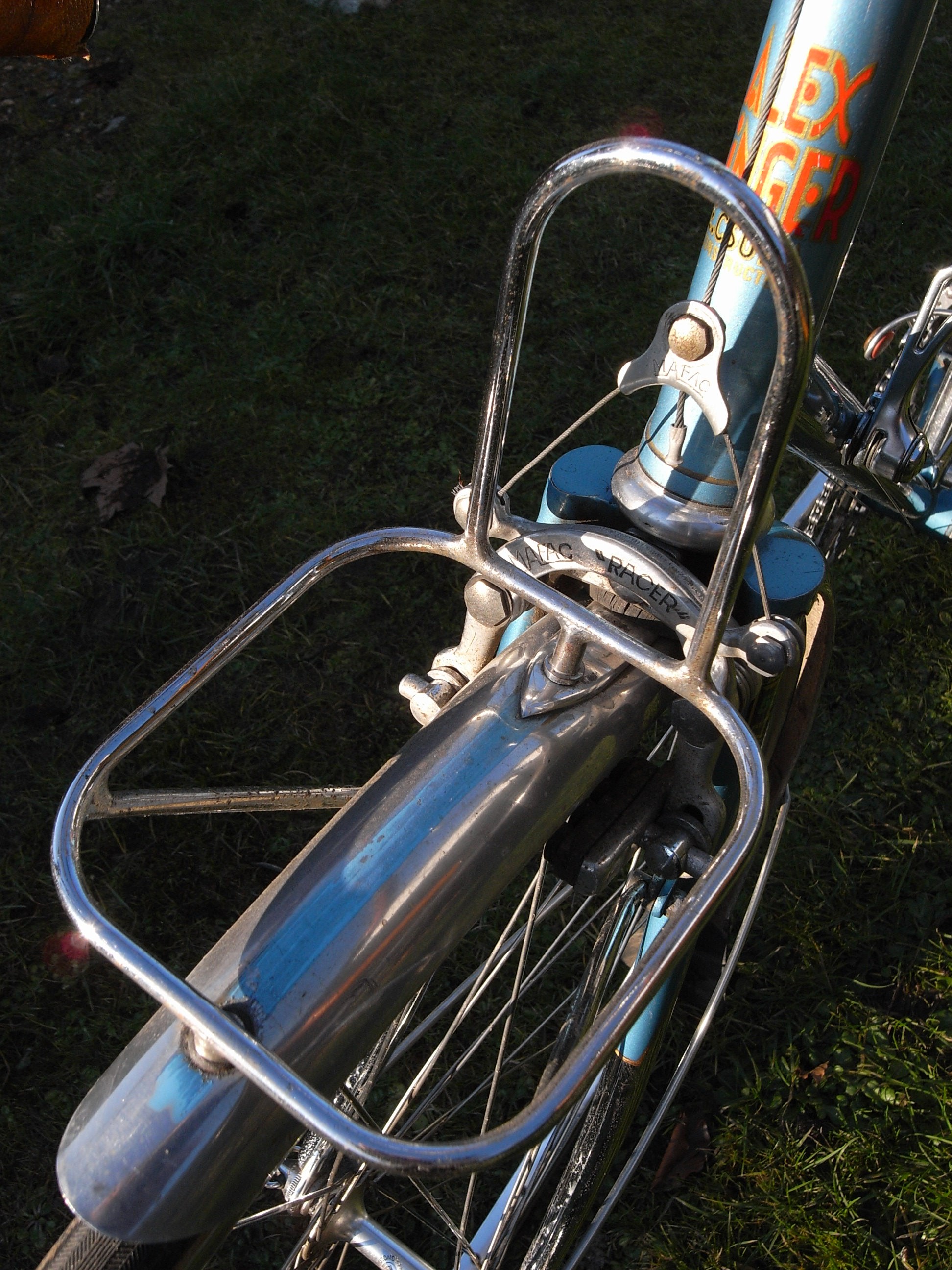
I realised that I have never featured one of my favourite bicycles, which was also the one that introduced me to the wonders of the French constructeurs. About 12 years ago I visited Neville March and his family near Bordeaux. I was already collecting Victorian and early 20th Century machines, and Neville had a great collection of these. But he also showed me his French touring machines of the 40’s and 50’s, and I was hugely impressed. It was the first time I had seen bicycles made by René Herse, Charrel, Barra and Alex Singer. His son Alexander, and daughter Helen were also very enthusiastic about them and they have continued the family collection after Neville’s passing. A number of the family’s beautiful machines are featured in Jan Heine’s essential book The Golden Age of Handbuilt Bicycles.

What struck me about these bikes was the fact that they were envisaged as a completely integrated machine, designed as a whole rather than as a frame with an assortment of parts bolted on. Whilst British makers were selling frames to be fitted up with proprietary parts from Campagnolo, GB, Chater Lea, Williams etc.. the constructeurs were producing custom made racks, stems, gear hangers, front derailleurs and even brakes. There were many innovations, which came about largely because of the Concours, or Technical Trials, events of the 30’s and 40’s, where rival makers vied to make the lightest and most elegant bicycles and fittings. Those fittings weren’t just designed as novelties, but had to be practical and reliable over the rigours of the trials courses. Just look at the Alex Singer hanger for the Cyclo gear, not only beautiful, but strong and durable too:

They also made best use of the latest very light duralumin parts available from makers such as Stronglight, Mafac, Mavic, AVA, Lyotard etc.. The other feature that appealed was the fact that these bicycles are very subtle and understated in appearance. Lugwork was purely functional, without fancy decoration. Even colour schemes were restrained with some makers adopting a ‘house colour’, such as the Charrel Lyonnaise brown, and the Routens dark red metallic. I have often watched people on vintage bike rides not even give my French machines a second glance. It takes a keen eye to notice the beautiful details.

This Alex Singer was my first French bicycle of the Golden Age. It was built in early 1947 and it incorporates many of the innovations mentioned above. The frame is constructed from the superlight Super Vitus tubing, and is chrome plated. It has Nivex rear dropouts, with chain hanger on the drive side. The rear axle is split, allowing for easy removal of the rear wheel whilst leaving the chain in place on the chain hanger.
It has a Singer fillet brazed stem, clamped to the steerer tube like the modern a-head. It also has their own design of brake and hangers, with unusual arrangement for the cable anchorage at the back and an elegant little brazed on hanger under the handlebar stem. There are twin bolts for the seat pin, echoing the arrangement for the handlebar stem. The Cyclo derailleur hanger is a work of art in tiny tubing! Front and rear racks are custom made, and there are Mavic Inal mudguards and Mavic wheel rims. The spokes are the super thin and light Trois Étoiles, tied and soldered, laced to C.A.R. hubs (before the company became Maxicar). Tyres were supplied by Grand Bois in Kyoto, 650B x 42. Stronglight cranks are mated to Lyotard pedals, and the derailleur is the duralumin Cyclo 4-speed. Philippe Professionnel handlebars are fitted with Lefol brake levers. A very light Ideale 47 saddle with duralumin frame completes the picture.

It’s unusual that this machine doesn’t have a double chainset, particularly as the original owner came from an area not far from Lyon. As the bike is equipped with front and rear racks it seems to have been designed for touring. I can only assume that he was either a very strong rider, or that he avoided mountains when he went touring!
Chrome finish was usually reserved for the top level machines, and is a practical and hard wearing finish. However, after almost 65 years, some of it is peeling off, although there is no pitting to the metal beneath. I’m entirely happy with the patina and wouldn’t dream of re-plating it. From time to time I wipe over the peeling areas with an oily rag to protect it.
This is a fantastic bike to ride. Common to many of this period, the fork rake is very pronounced (and very elegant) and this leads to low trail geometry. Combined with large diameter tyres this contributes to a stable ride, with excellent cornering characteristics. To understand the theory behind low trail geometry there is an excellent article by Jan Heine here. The bike is very light, considerably more so than later machines of similar design by Singer that I have. The lightness is the more remarkable since it is equipped with racks, mudguards and dynamo lighting. I love the fat 42mm tyres, which I run at 55lbs. Rolling resistance is very low and it makes for a very comfortable and fast ride. It was my first French randonneuse, and it started something of an addiction!








































































You must be logged in to post a comment.